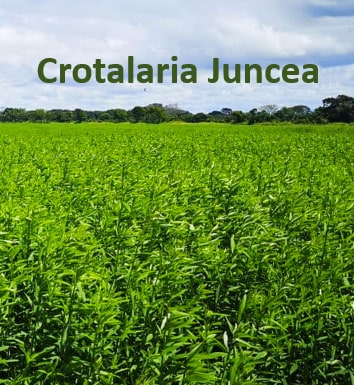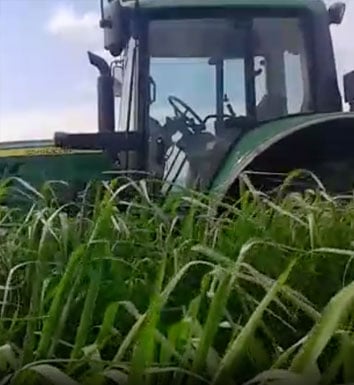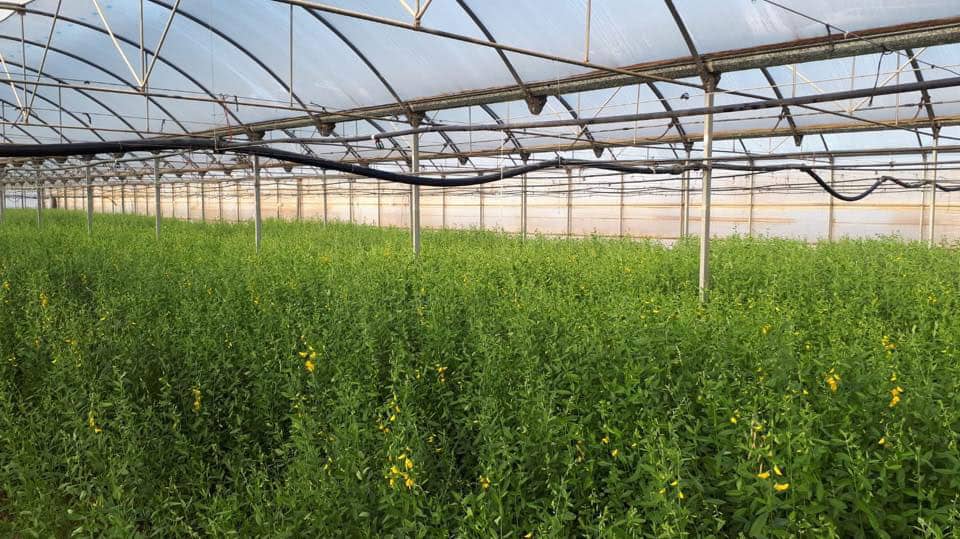Mukale
Mucuna pruriens
It belongs to the legume family, its establishment is slow, having a gemination period between 5 to 7 days.
After germination and establishment, it develops a large plant mass in a short period of time, which makes it control weeds effectively, and gives an ideal crop as green manure and / or cover crop.
It helps to conserve the soil since the large amount of foliage it produces forms a cover that prevents erosion and conserves moisture, adding between 10 and 15 tons of green matter to the soil per year.
Being a legume, it has the ability to fix atmospheric nitrogen, thus making it available to plants. In addition, nitrogen is released during leaf decomposition and is available for further cultivation. The Mukale can provide around 150 kg/ha.
It should be noted its action for the control of nematodes, Mukale produces nematicide compounds in their decomposition and can reduce nematode populations in rotations with other crops.
It is also suitable for animal feed providing high protein values.
Characteristics
- Large vegetable mass
- Good weed control
- Erosion control
- Prevents evaporation from soils
- Nitrogen Fixation
- Nematode control

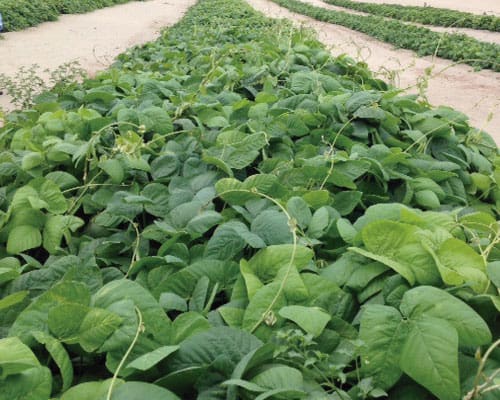
Sheet
Scientific name of the species
Mucuna pruriens
Common name of the species
Mukale
Vegetative cycle
Annual, 12 - 14 weeks
Growth
Climber
Height
6,00- 8,00 m (total development with tutor)
Growing season
Warm season
Diffusion
Seeds
Soils
Deep, well drained. Sandy, silty and loamy loam
Drought tolerance
Loud
Frost tolerance
Casualty
Salinity tolerance
Medium - high
Flood tolerance
Does not tolerate
Total dry matter production/ ha
5,000 - 7,000 kg of dry matter / ha
Palatability
Good
Toxicity
No
Planting period
From the beginning of the hot season
Planting density
30 - 40 kg / ha
Planting depth
1-2 cm
Remarks
Cover crops and fodder
Implantation of Mukale
Preparation of the land
The preparation of the soil must be carried out in order to promote a good establishment of the crops, being used appropriate equipment in the correct period, considering that the preparation of the soil is one of the most important aspects for the birth. You must get a loose soil which will allow us to have the right planting depth.
Sowing and establishment
Data to take into account is the planting surface, the correct surface is 1-2 cm. deep in soil.
- The use of compactor curl in sandy soils improves the quality of planting based on the uniform acceleration of seed germination (not recommended for clay soils).
- It can be sown in direct sowing obtaining excellent results.
The establishment must occur when the luminosity and temperature are adequate for germination.
It usually coincides with minimum temperatures above 10 degrees Celsius.
Irrigation
Water is necessary for germination to occur.
When seeds are hydrated with soil moisture, they absorb water. It is the initial process of germination.
- Germination irrigation, of the amount necessary to make the moisture in the soil homogeneous, taking into account the climatic factors (wind, the type and texture of the soil, orography of the terrain). Fournir suffisamment d’eau pour rassembler l’humidité dans le sol, en utilisant un volume d’eau élevé pour éviter les problèmes de “cuisson” de la graine dus aux températures élevées à la date de plantation, en évitant toujours l’engorgement.
- Subsequent irrigations: taking into account the climatic factors (wind, the type and texture of the soil, orography of the terrain) must be carried out at the request of the plant, the symptoms of irrigation needs are flaccidity and decay of the leaves.
- The water needs of the plant are increasing according to the growth of the plant, having to provide more water as the plant grows.
- In a first stage (still small plant) the plant does not tolerate an excess of water correctly.
- First irrigation germination, with this type of irrigation takes even more importance the use of the roller compactor to avoid the possible dragging of the seed (provided that the texture of the soil allows us).
- Second half-cycle irrigation: it should be provided when the crop is in the middle of the cycle. However, as we indicated in sprinkler we must analyze the water need of the plant, being able to advance or delay irrigation at the request of the crop.
Weed control
Mukale is one of the Fabaceae families which implies that it is classified as a broadleaf crop.
Narrow leaf weed control: Narrow leaf weed control can be done in pre-sowing or post-planting using any selective herbicide we find on the market.
Control of broadleaf weeds: this crop is a broadleaf crop we must take many precautions when choosing the herbicide to combat broadleaf. Exclusively as a tested herbicide we can recommend in pre-emergency Pendimetaline 45.5% at a dose of 2 liters hectare. The correct application must be carried out with the seed established in the soil and after its application perform an irrigation for its perfect action.
Fertilization
It should be noted that Crotalaria juncea is one of the families of legumes so it carries intrinsic its ability to fix nitrogen in soil, an action it performs by capturing CO2 from the atmosphere and transforming it into nitrogen by fixing it by the nodules of its roots,
to do this action we must inoculate the seeds with Bradyrhizobium. Nitrogen fixation such as the contribution of organic matter and the reduction of the nematode population in the soil are its main characteristics that make Crescent Sunn an international reference green manure.
In its forage use, where the purpose is to get the highest possible yield to obtain the highest productions the fertilizer as in all crops is a basis to take into account.
Advisable fertilizers: the levels of phosphorus, nitrogen and potash must be maintained in their optimal state since they are macro elements that are linked to the growth of plant species. Fertilizers not very rich in nitrogen and high in phosphorus and potash are advised.
Diseases
Mukale can be sensitive to the plague of insects such as gardama, donut or polyphagous insects, if these were present in the crop we must treat with an insecticide containing pyrethrin, a systematic insecticide that can usually be found in stores.
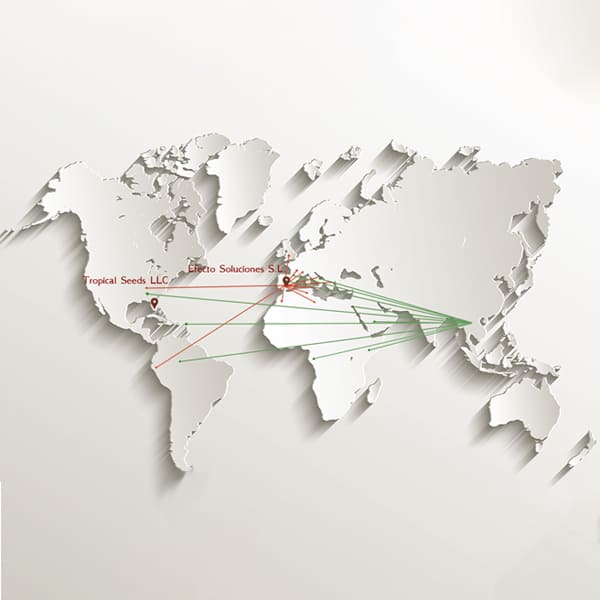
Contact us
- Responsible: Efecto Soluciones S.L.
- Purpose of the collection and processing of personal data: to manage the request you make in this contact form.
- Rights: You can exercise your rights of access, rectification, limitation and deletion of the data in info@efectosoluciones.com, as well as the right to file a claim with a control authority.
- Additional information: In the privacy policy you will find additional information about the collection and use of your personal information. Including information on access, preservation, rectification, deletion, security and other topics.

